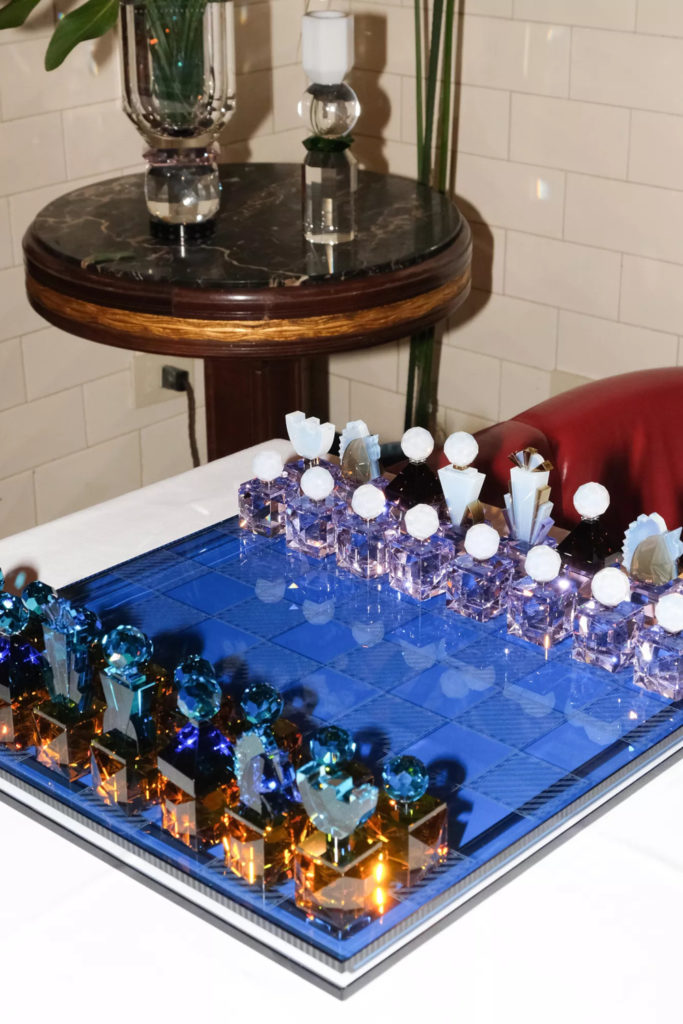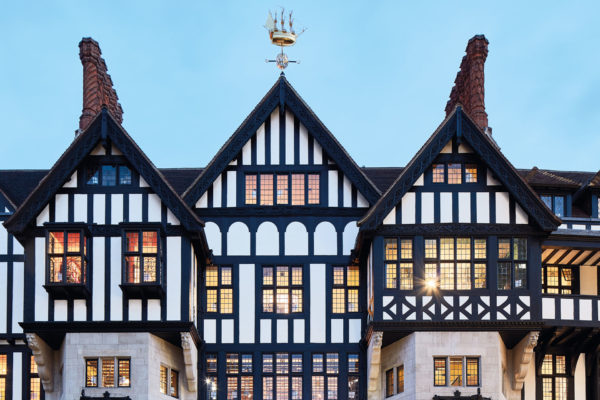The Brits Are Already Here – British Interiors Brands Conquering The States
By
1 year ago
Why do Americans love our brands? Craftmanship and whimsy, brands reckon

It’s not new for British interior brands to have a foot in the American market – both The Conran Shop and Laura Ashley made their US debuts with standalone stores back in the mid-Seventies – but it is safe to say there has always been a rather tentative approach to venturing into the US. Until now. Roll forward 50 years and there is something in the transatlantic waters, judging by the influx of businesses storming the States. The past year alone has seen some of the UK’s best known design names launching or expanding across the pond and the days of gentle toe-dipping appear long gone, replaced with a vigour to command a slice of the American pie. This summer, luxury cupboard-makers Plain English opened its second US showroom, this time in Los Angeles, following its first in New York in 2018.
‘We made the decision to move into America essentially on the basis that we wanted to expand our business,’ says Tony Niblock, who founded Plain English in 1992 alongside Katie Fontana. ‘We felt we had hit a plateau with the number of people that could buy Plain English in the UK.’ Surprisingly, there had been relatively little interest from America up until that point. ‘In our first 27 years, we’d done a handful of kitchens, five or six, in the US,’ says Tony. ‘Suddenly, when we opened up, we got enquiries from all over the country.’
Six years later, the gamble has clearly paid off. ‘In terms of pounds and dollars, on pure joinery alone, the US has now overtaken the UK. It just absolutely boomed.’
Why English Interiors Brands Are Conquering The States
Tony pins Plain English’s US success down to Americans’ enduring love for an English aesthetic. ‘There’s a general feeling that British craftsmanship is a bit better than American, and people are prepared to buy into it,’ he says. ‘We do it slightly differently and are slightly quirky.’
There have been a slew of other openings including Soane Britain, the distinguished maker of fabric, furniture and furnishings, which launched a flagship showroom on Madison Avenue last autumn. ‘Opening a showroom in New York feels like the natural next step given how closely we already work with American clients,’ says Soane’s co-founder and creative director Lulu Lytle. ‘Our ambition is that by bringing the talents of our UK-based craftspeople to a wider audience, appreciation will grow, ensuring more apprentices will be trained in these vital heritage skills.’

Fromental is one British interiors brand loved by the Americans for its whimsy
Alix Lerman, chief marketing officer at the New York Design Center, a premier interior design destination that houses more than 100 showrooms – several of which are British, including Julian Chichester, Fromental, Collier Webb and more recently Jennifer Manners and Tom Faulkner – admits British brands have a unique draw. ‘American design has a strength too, but there’s a flair and a bit of whimsy in British design which makes it special and Americans love that.’
Furniture-maker Tom Faulkner unveiled his first US showroom last September after being stocked in ‘partner’ stores around the country since 2016. The US is about 40 times bigger than the UK and the lucrative opportunity for growth, he believes, is what attracts many British interior brands: ‘From our point of view, America is increasingly seen as an obvious place to invest in because it’s a huge market. Americans have much bigger houses and love decorating.’ Faulkner’s US sales now make 30 to 40 percent of his overall figures. ‘I think Britishness is attractive in the market. Our pieces have a distinctive, coherent look and we stand out,’ he says. ‘The main difference is the scale – Americans want things much bigger.’
Not Without Challenges
But both Tom and Tony point out that the process of opening a showroom in the US has its challenges. ‘There are lots of obstacles,’ says Tony. ‘The first obstacle was our [US] bank was very reluctant to loan us any money because they’ve seen so many businesses fail going into America. Finding a bank that would accept us because we were a foreign business was very difficult.’
Recently, decorative wallcovering specialists Fromental joined forces with bespoke lighting and furniture brand Collier Webb to open a joint flagship showroom at the New York Design Center. Fromental has had a presence in the States for nearly 20 years and today it makes a third of its sales.
‘The biggest differences between our UK and US clients often revolve around design aesthetics, project requirements, and budget considerations,’ says Fromental’s co-founder and creative director Tim Butcher. ‘While both appreciate quality and craftsmanship, American clients may lean towards larger-scale projects and bolder design statements.’
Danielle Collier, managing director at Collier Webb agrees: ‘While we haven’t created specific products or styles exclusively for the US market, we’ve certainly observed preferences and trends unique to American clientele. For example, they tend to push the boundaries of what’s possible and challenge us to customise our pieces to suit their taste.’

A sink by the London Basin Company, which has launched a website targeting US audiences this year
Other brands, such as lighting brand Pooky and the London Basin Company, known for its ornate sinks, launched their own US websites this year, and the latter has found its first US retailer, Flow Design in Philadelphia.
Gingerlily – the only luxury pure silk bedding specialist stocked in Bloomingdales – recently unveiled an American website and created products adapted to the market. ‘It was a real education for us to research exactly how Americans prefer everything,’ says Gingerlily co-founder Deborah Fiddy. ‘For example, they like their standard pillowcases to be a couple centimetres larger than the insert, the pillow inside. They like the insert to move around whereas in the UK, we like it firm. Also, Bloomingdales asked us for navy bed linen, which we had never made before in the UK, but is popular over there. We had to learn a lot of terminology too, like a duvet is a comforter there, a pillow is a cushion.’
New York, New York – Or Not
While most of the recent influx of brands have zoned in on New York City, some such as Little Greene have bucked the trend. The paint brand chose Greenwich, Connecticut, an upmarket town an hour’s drive away, as the location for its first American bricks-and-mortar store, which opened at the end of last year. ‘Greenwich felt like a natural choice as it felt particularly relatable to us as a brand,’ says Little Greene’s creative director Ruth Mottershead. ‘It has a lovely village feel.’ Ruth believes it is more than aesthetics that make Little Greene stand out. ‘There seems to be a deeper connection with the British brands that the US market chooses. Authenticity, quality, craft and personal service all resonate, and these are qualities that many British brands, including ours, have at their core.’






